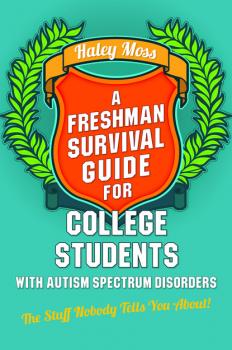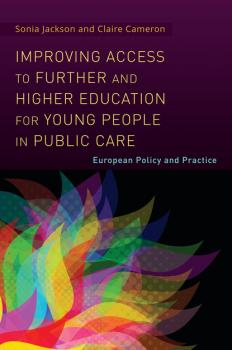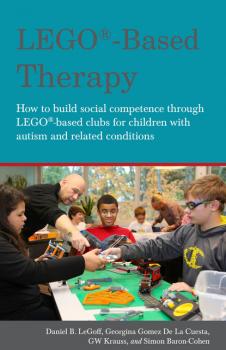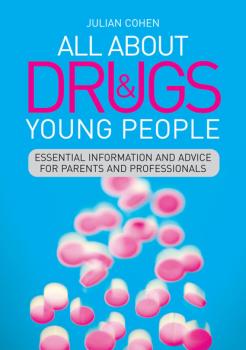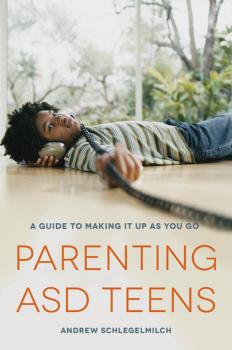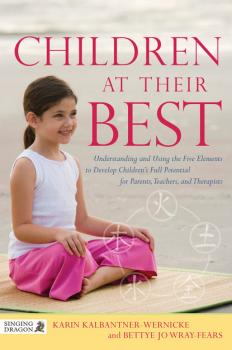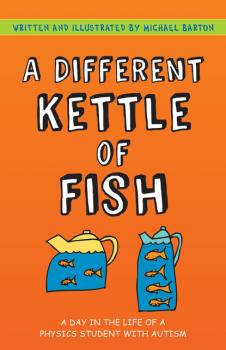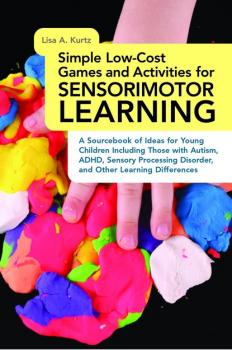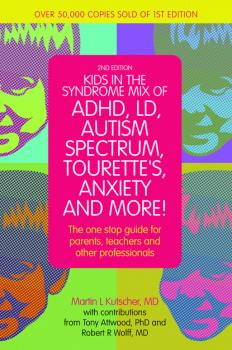Учебная литература
Различные книги в жанре Учебная литератураA Freshman Survival Guide for College Students with Autism Spectrum Disorders
How do you know which college is right for you? What happens if you don't get on with your roommate? And what on earth is the Greek system all about? As a university student with High-Functioning Autism, Haley Moss offers essential tips and advice in this insider's guide to surviving the Freshman year of college. Chatty, honest and full of really useful information, Haley's first-hand account of the college experience covers everything students with Autism Spectrum Disorders need to know. She talks through getting ready for college, dorm life and living away from parents, what to expect from classes, professors and exams, and how to cope in new social situations and make friends. This book is a must-read for all students on the autism spectrum who are about to begin their first year of college, parents and teachers who are helping them prepare, and college faculty and staff.
Improving Access to Further and Higher Education for Young People in Public Care
Across Europe young people in public care are around five times less likely to attend tertiary education than those who have not been in care. This book provides a comprehensive account of why this shocking discrepancy exists and outlines ways to address the imbalance. Drawing extensively on a substantial three-year long European Union funded research project led by the authors, this book examines the participation of young people in care in further and higher education in Europe. It provides a historical and legislative overview of the topic and in-depth national case studies look at the situation in England, Denmark, Sweden, Spain and Hungary. The authors set out clearly what we can learn from these cross-national comparisons and how to create more equal opportunities for children and young people in care. This important book will be essential reading for researchers and policy makers working on child welfare or young people in care, including government and local authority policy-makers, managers of children's and education services, school governors, and academics working in the fields of education, sociology, psychology, social work and social policy.
LEGO®-Based Therapy
This complete guide to LEGO® Therapy contains everything you need to know in order to set up and run a LEGO® Club for children with autism spectrum disorders or related social communication difficulties and anxiety conditions. By providing a joint interest and goal, LEGO® building can become a medium for social development such as sharing, turn-taking, making eye-contact, and following social rules. This book outlines the theory and research base of the approach and gives advice on all practical considerations including space, the physical layout of the room and choosing and maintaining materials, as well as strategies for managing behaviour, further skill development, and how to assess progress. Written by the pioneer of the approach alongside those who helped form it through their research and evaluation, this evidence-based manual is essential reading for professionals working with autism who are interested in running a LEGO® Club or learning more about the therapy.
All About Drugs and Young People
Packed with information, advice and learning activities, this book tells you what you need to know about drugs, young people's drug use, and how you can help them stay safe. It covers everything from what the effects are and why young people take drugs, to how to negotiate drug rules and ways to prevent and minimise harm. An easy to use section contains factual information about various drugs, covering a description of each drug, street names, a brief history, legal status, availability, extent of use and cost, effects, possible harms, and harm reduction advice. The newest and emerging drugs, such as legal highs, are included, as well as illegal drugs, alcohol, caffeine and tobacco. If you are working with or supporting young people or are a parent or carer, this is the book you need to help you understand drugs and respond positively and effectively to young people's drug use.
Parenting ASD Teens
This straight-talking and accessible guide for parents of teenagers on the autism spectrum provides down-to-earth advice on coping with the more difficult issues that can arise at home and school during the adolescent years. Andrew Schlegelmilch discusses common parenting challenges and offers advice drawn from his extensive experience working with teenagers with autism and their families as Head Psychologist at a college preparatory school. He offers parents professional guidance on what to do about falling grades, how to handle adolescent tantrums, how to talk about sex and sexuality with your child, how to help your child with peer relationships, how to keep your child safe online, and what to do if you suspect your child has mental health problems. Integral to the discussion is how to set realistic expectations and encourage independence in ways that work for both your child with autism and the rest of the family, as well as how to make the best use of the help professionals can offer.
Children at Their Best
Understanding child development through the prism of the Five Elements adds an exciting new dimension to western thinking on the nurture of children. It can not only explain patterns of behaviour in a new and helpful way, but suggest approaches and methods to help children, and groups of children, become more balanced and therefore happier, more resilient, and more open to learning and new experience. The authors explain in detail the characteristics of each of the Five Elements of Chinese thought (Wood, Fire, Earth, Metal and Water) with their distinctive modes of expression and potential associated difficulties, and describe the problems that can occur if a child's elements are not in balance. In doing so, they provide a completely new and accessible way of understanding the emotional and behavioural state, and developmental stage of a child, in and out of the classroom. They introduce a wide range of easy-to-do and entertaining exercises and group activities to balance the elements, both individually and in groups. This exciting and practical book will help anyone working with or caring for children to deepen their understanding of childhood behaviour in general, and of individual children in particular, and to take active steps to nurture their potential, including teachers, therapists, occupational therapists, Chinese medicine and other alternative medicine practitioners, and Qigong and martial arts teachers, as well as parents.
A Different Kettle of Fish
“I'm looking at the Solar System display when I hear a child close by shouting at his mum, to which she replies 'No need to bite my head off!' I've heard of laughing your head off (to laugh a lot) and even biting your tongue (to be quiet) but biting someone's head off puts a rather more vivid picture into my mind!” During a trip to London, taking in tube announcements, guitar shops, and the Science Museum Michael Barton explores and explains the confusing “neurotypical” world of contradictory signage, hidden meanings and nonsensical figures of speech. His quirky and comic illustrations bring to life the journey from the comfort of his familiar university surroundings into the hectic bustle of central London. A fun and enlightening read for friends, family, caring professionals and anyone interested in an alternative viewpoint on the world. Sure to “strike a chord” with other day trippers on the autism spectrum.
Simple Low-Cost Games and Activities for Sensorimotor Learning
This practical sourcebook is packed full of fun, low-cost games and activities that encourage the development of motor skills, coordination and sensory tolerance in young children. Using materials that are readily-available in most households or that can be purchased or homemade at a very low cost, these games and activities are appropriate for all children, including those with autism, ADHD, Sensory Processing Disorder, and other learning challenges. The book includes clear descriptions of how to carry out each activity, helpful illustrations, and ways to adapt activities according to the child's individual needs. In addition, a comprehensive reference guide to the activities enables easy searching for games suited to the development of particular skills. This sourcebook is the key to easy-to-understand, low-cost, and effective games and activities that will support the development of sensorimotor skills. It is a useful tool for parents, carers, therapists, and teachers of children with or without special needs.
Kids in the Syndrome Mix of ADHD, LD, Autism Spectrum, Tourette's, Anxiety, and More!
The completely updated and expanded new edition of this well-established text incorporates DSM-5 changes as well as other new developments. The all-in-one guide covers the whole range of often co-existing neuro-behavioral disorders in children – from attention deficit hyperactivity disorder (ADHD), obsessive-compulsive disorder, and anxiety, to autism spectrum disorders, nonverbal learning disabilities, Tourette's, sensory integration problems, and executive dysfunction. A completely revised chapter on the autism spectrum by Tony Attwood explains not only new understanding in the field, but the new diagnostic criteria, and the anticipated usage of the term 'Asperger's Syndrome'. Dr. Kutscher provides accessible information on causes, symptoms, interactions with other conditions, and treatments. He presents effective behavioral strategies for responding to children who display traits of these disorders – whether at home, at school, or in other settings – along with case vignettes and practical tips. Finally, a chapter on the role of medications summarizes current knowledge. The author's sympathetic yet upbeat approach and skillful explanations of the inner world of children in the syndrome mix make this an invaluable companion for parents, teachers, professionals, and anyone else who needs fast and to-the-point advice on children with special needs.
How to Get Kids Offline, Outdoors, and Connecting with Nature
Full of ideas, activities and exercises, this book provides imaginative ways to inspire young people to put down the computer games, disconnect from social media, and spend more time away from a screen. In an increasingly electronic world, creating enthusiasm for the great outdoors can seem an impossible task. Yet, the benefits of nature are endless, and they extend further than just improving physical health; being in natural surroundings is also an effective way to boost imagination, creativity and overall wellbeing. In whatever capacity you work or care for children and young people, this book will help you motivate them to reboot their connection with nature and become healthier for it. Addressing how nature-based activities can be used for improved mental health, this book will be an invaluable addition to the library of any professional who works with young people including counselors, educators, youth group workers, social workers, and childcare providers. It is also a useful resource for parents.
